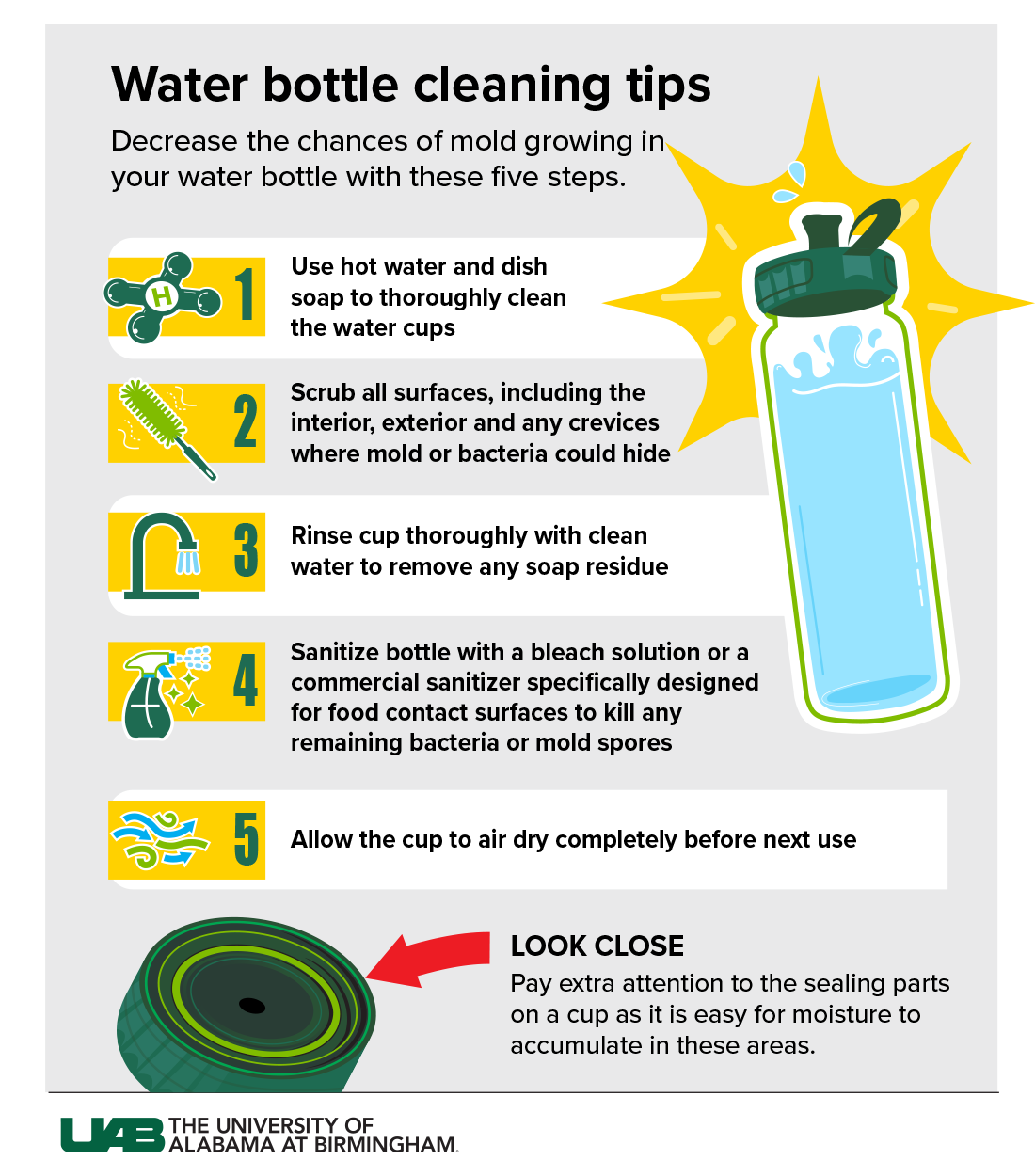Name-brand water bottles have become the newest trend, but what happens when they are not properly cleaned? One UAB expert explains how bottles are a breeding ground for mold and bacteria. (Adobe Stock Photo)
” data-medium-file=”https://www.birminghamtimes.com/wp-content/uploads/2024/03/AdobeStock_554593965-300×185.jpeg” data-large-file=”https://www.birminghamtimes.com/wp-content/uploads/2024/03/AdobeStock_554593965-1024×631.jpeg” />
When a bottle is not dried properly, moisture can accumulate, and even small amounts of residual moisture can make drinkware more susceptible to mold.
“Mold spores, which are ubiquitous in the environment, can settle on damp surfaces and begin to grow,” said Benjamin Turner, instructor in the University of Alabama at Birmingham’s Department of Biology. “Additionally, if the water inside the bottle is not replaced regularly, organic matter from saliva or other contaminants can provide nutrients for mold to thrive.”
Turner says reusable water bottles can be a convenient and environmentally friendly option, but that regular cleanings are imperative to prevent mold growth.
What Is Mold?
Mold is a type of fungus that grows in tiny, thread-like structures called hyphae. It comes in many colors, like green, black or white, and often looks fuzzy or slimy. Mold likes to grow in damp and warm places, and it spreads by releasing tiny spores into the air.
“These spores can land on surfaces and start new mold colonies,” Turner said. “Sometimes mold can be helpful, like in making cheese or medicine; but other times it can be harmful, causing allergies or damaging buildings and food.”
How Do You Properly Sanitize a Cup?
Water cups should be cleaned regularly, ideally daily, to prevent mold growth. If the same cup is not used every day, Turner says, clean it every few days to prevent any mold or bacteria buildup. He recommends the following ways to properly clean water bottles:
- Use hot water and dish soap to thoroughly clean the water cups.
- Scrub all surfaces, including the interior, exterior and any crevices where mold or bacteria could hide.
- Rinse cup thoroughly with clean water to remove any soap residue.
- Sanitize bottle with a bleach solution or a commercial sanitizer specifically designed for food contact surfaces to kill any remaining bacteria or mold spores.
- Allow the cup to air dry completely before next use.
Pay extra attention to the sealing parts on a cup as it is easy for moisture to accumulate in these areas. Turner recommends disassembling the parts and cleaning them thoroughly to ensure all traces of moisture and debris are removed.
“It is important to clean any rubber sealing parts, straws or lids that may have crevices where moisture can accumulate — these areas can be hot spots for mold growth if not properly cleaned and dried,” Turner said. “Inspect them regularly for any signs of mold or mildew growth, and immediately clean and sanitize the cups again if found.”
Is It Harmful To Ingest Mold?
While not all molds are harmful, ingesting mold is generally not recommended, especially in large quantities. Turner says the primary concern with mold exposure typically comes from inhalation or skin contact rather than ingestion.
“When mold spores are inhaled or come into contact with the skin, they can cause a range of health issues, particularly for individuals with allergies, asthma or weakened immune systems,” Turner said. “It’s important to note that the severity of the health effects can vary widely depending on individual susceptibility, the type and concentration of mold present, and the duration of exposure.”
Common symptoms of mold exposure include respiratory problems such as coughing, wheezing or throat irritation, as well as nasal congestion, skin irritation and, in severe cases, mold-induced infections.
To reduce the risk of mold exposure, Turner recommends looking for reusable, dishwasher-safe water bottles made of materials like stainless steel or BPA-free plastics when purchasing drinkware.












